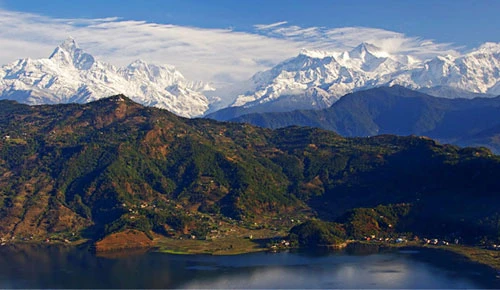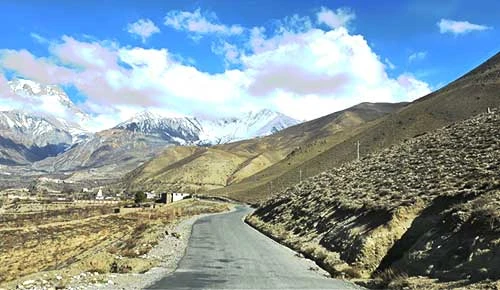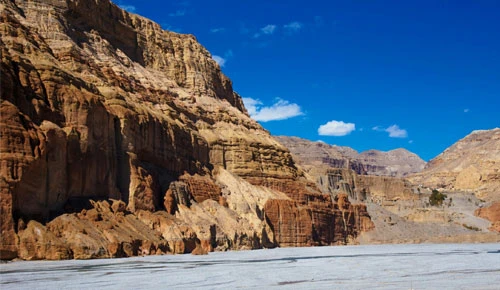History of Trekking in Nepal
Trekking in Nepal has a relatively recent history, but it has evolved into a major industry and a popular activity for adventure seekers and nature enthusiasts from around the world. The history of trekking in Nepal can be traced back to the mid-20th century.

World's Most Inaccessible Countries Untill 1949
Nepal was formerly one of the world's most inaccessible countries. Foreigners could only travel to Kathmandu from India until 1949. Beginning in 1949, a few mountaineering teams were allowed to visit distant sections of the nation to attempt ascents of the high peaks, but until 1955 Nepal maintained a policy of banning outsiders that stretched back nearly two centuries.
A new mentality began with King Mahendra's 1955 coronation. The first tourist visas, hotel, and guests arrived that year. Tourism developed slowly. In 1962, around 6,179 tourists entered the Nepal. Since then, mass tourism has arrived in Nepal, and the government has grown interested in tourism development.
Tourism overtook rice exports and Gurkha remittances as the country's main foreign money source in the 1970s.
Nepal became a popular tourist destination after Kathmandu's Tribhuvan airport was expanded to accommodate jets and the government encouraged hotel development. In the 1980s, Kathmandu saw a boom in affordable and luxury hotels.
Visitors rose from 162,897 in 1980 to 265,943 in 1988 until the political instability in Nepal and India in 1989 and 1990 caused a modest dip.
India accounted for 27% of international visitors to Nepal in 1988, while the US, UK, West Germany, Japan, France, and Australia accounted for 41%.
Over the past twenty years, Nepal has become a significant adventure-travel destination, offering mountain climbing and hiking, helicopter tours, white-water rafting and kayaking, and wildlife viewing.
Today, the country is known for trekking, multiday hikes on its wide trail system over mostly roadless highlands. Trekking offers adventure, close-up views of some of the world's most stunning high territory, and direct contact with various mountain peoples.
These attractions have been well-marketed in Europe, North America, Japan, Australia, and New Zealand, and many Kathmandu-based trekking firms have flourished by meeting foreign demand.
Tourism dominates Nepal's economy and economic planning. Nepal remains Asia's most pro-tourism nation. Foreign investment in hotels and transit has been loosened to support tourism growth by the Ministry of Tourism. Current policy is to triple tourist arrivals to one million per year within a decade.
In 1984, around 41,206 trekking permits were issued, and the government estimated that 15,000 tourists participated in trekking. By 1988, the number of trekking permits issued had increased to 61,273, but only 23% of Nepal's tourists were trekkers. However, even tiny numbers of tourists have had a big impact on distant mountain communities.

Khumbu has been one of Nepal's top climbing and trekking destinations.
Since these types of tourism began, Mount Everest and its legendary Sherpas have drawn 20% of trekkers and nearly half of mountaineering expeditions.
Tourism here has gained more international attention than anywhere else in the country. Khumbu is the most spectacular Himalayan example of small-scale, locally controlled trekking and climbing tourism development.
Sherpas have capitalized on new tourism opportunities by working as sirdars (responsible for managing porters, packstock, and camps), camping crews, cooks, porters, and owners of packstock strings and lodges, teashops, and shops. Tourism has supplanted trans-Himalayan trade as a key component of the Khumbu Sherpa economy and household subsistence tactics.
Table of Contents
Development of Trekking in Nepal
Early Explorations
The exploration of Nepal's remote regions began in the mid-19th century, primarily conducted by British surveyors and military personnel. Their expeditions aimed to map the region, study the geography, and search for potential trade routes.
First Official Trek
The official history of trekking in Nepal started in 1949 when Nepal opened its doors to the outside world after centuries of isolation.
British diplomat and mountaineer, Lieutenant Colonel James Owen Merion Roberts, is credited with organizing the first commercial trek in Nepal in 1950. He led a group of British tourists on an expedition from Kathmandu to the Annapurna region.
Annapurna trek was the beginning of commercial trekking in Nepal and laid the foundation for future developments in the trekking industry.
Formation of Trekking Agencies
In the 1960s and 1970s, more trekking agencies and tour operators began to emerge, organizing treks for international tourists.
The Annapurna and Everest regions became popular trekking destinations during this time. As word spread about the stunning landscapes and unique cultural experiences, the number of trekkers visiting Nepal increased steadily.
Conservation and Development Initiatives
With the growing number of trekkers, concerns about environmental conservation and responsible tourism started to arise.
The Sagarmatha National Park (Everest region) was established in July 19, 1976 AD and the Annapurna Conservation Area Project (ACAP) was established in the 1986 AD, making them some of the world's first protected areas to be managed with the involvement of local communities.
These initiatives aimed to preserve the natural beauty of the trekking regions and provide benefits to local communities through sustainable tourism.
Peak Mountaineering and Trekking Boom
In the 1980s and 1990s, Nepal witnessed a significant increase in trekking and peak mountaineering expeditions. The country's challenging and diverse terrain attracted both seasoned mountaineers and novice trekkers. The trekking industry flourished during this period, contributing significantly to Nepal's economy.
Post-2000 Developments
In the 21st century, trekking in Nepal continued to evolve with improved infrastructure, better access to remote regions, and advancements in trekking equipment and services.
The government introduced new trekking regulations and safety measures, and various NGOs and organizations focused on responsible tourism and environmental conservation.
Trekking in Nepal has now become an integral part of the country's tourism industry, attracting hundreds of thousands of trekkers each year. It continues to offer a unique combination of natural beauty, cultural experiences, and adventure, making it one of the world's most sought-after trekking destinations.








